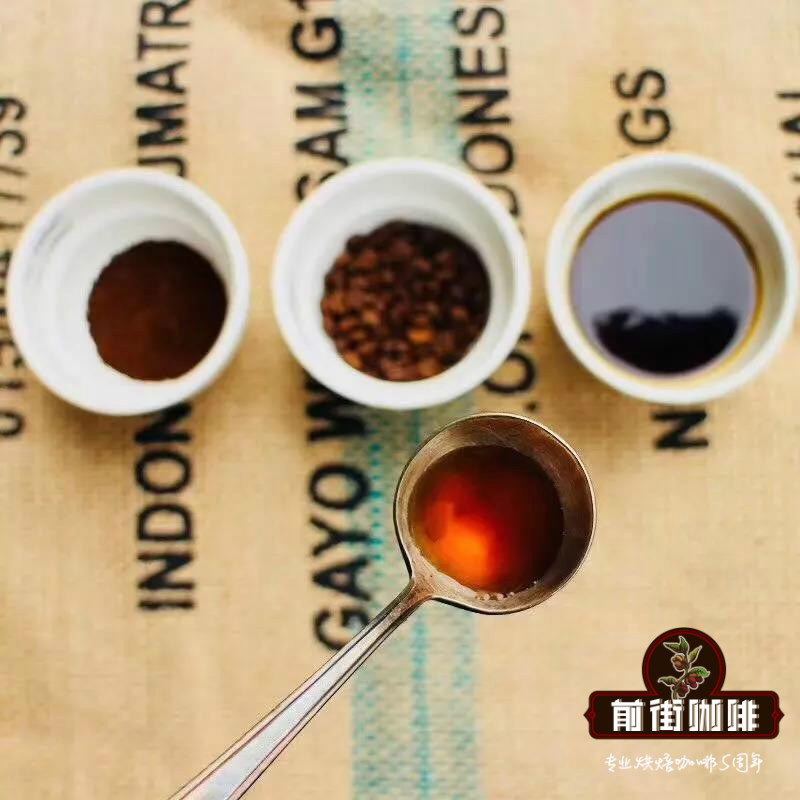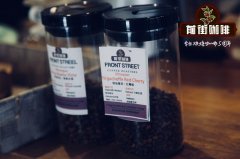Coffee trees are planted! Coffee hands: the harm of illness (Disease)

Professional coffee knowledge exchange more coffee bean information please follow the coffee workshop (Wechat official account cafe_style)
In the last episode, we knew that diseases and insect pests would destroy the growth of coffee, and we also had a general understanding of the species of coffee pests. In this article, let's look at the diseases of coffee trees.
Disease is also a major threat to coffee farmers and coffee plants. here are some common diseases:
Coffee leaf rust
This fungal disease is a global problem, and many farmers have been fighting against it for a long time. The BBC BBC stressed that the disease has the ability to weaken or even destroy the country's coffee industry, especially in coffee-producing countries that rely on exports and rely on coffee as their main cash crop.
Leaf rust hit the coffee industry in Central America hard in 2012 and caused more than $1 billion in economic losses over the next two years.
The disease causes orange-like rust spots on the back of coffee leaves, and the disease can cause leaves to fall, just like coffee leaf worms. Wind and rain can spread the fungal spores of leaf rust, and the fungus will grow in large numbers at about 21 °C, so the disease is most common in Arabica trees grown in low-altitude, warm, humid climates.
Because the disease limits the growth of new stems, it will not only affect the yield of the current year, but also have a significant impact on the coffee harvest of the next year.
Coffee trees infected with leaf rust cannot produce fully ripe fruit, and even if they succeed in growing fruit, they will produce defective beans that are lighter in weight and tastes astringent. French research report pointed out: "Coffee trees seriously infected with leaf rust will produce dead beans, which may turn brown after washing, and these beans will form a sour smell and other odors." "
Wilt disease
Fusarium wilt is a vascular disease of coffee trunk infected by fungi, which blocks the circulation of water and sap, resulting in fallen leaves, branch necrosis and early fruit ripening.
The use of these red but unripe fruits may make the coffee lose its acidity, increase its bitterness, and even show the green taste of the unripe fruit.
Pink disease (translated by Pink Disease)
Pink is another fungal plant disease (common in cash crops such as coffee and cocoa). It causes pink reticulation on branches, and infected branches lose leaves and die. The disease occurs mainly in coffee-producing areas of Brazil.
How to prevent coffee diseases and insect pests
The best way to prevent diseases and insect pests is good farmland management. The selection of varieties, the management of shade trees, the selection of pesticides and the fertilization of plants are the key points to be considered.
Francisco, a coffee producer and exporter in Guatemala, mentioned that diseases and insect pests can be prevented through good fertilization, while monitoring the temperature and humidity of the growing environment is an important action to allow coffee trees to grow at the best time and have good shade.
Pruning and Environmental Sanitation
It is recommended that coffee trees need to schedule pruning schedules, which should be pruned at least every five years, which will increase the risk of leaf rust infection.
But the process of pruning coffee trees can damage plants, and these scars are vulnerable to fungal infections, especially during the rainy season, so you need to avoid damaging coffee trees when pruning and weeding.
At the same time, we should also pay attention to the cleaning of pruning utensils to prevent coffee trees from infecting each other. These measures to control diseases and insect pests are called plant epidemic prevention measures.
Monitoring of planting
Monitoring is the key to the prevention of diseases and insect pests in coffee trees. Monitoring diseases and insect pests on the farmland side can help prevent large-scale outbreaks and minimize the use of chemicals. The monitoring standards are different in different countries.
Colombian coffee producer Jhon Espitia said producers need to record the time of flowering, as well as the time and dose of fertilization, and he recommends using soil analysis to identify specific nutritional needs and schedule specific dates for fertilization and monitoring.
He also said that farmers need to track the shade, rainfall and humidity of coffee trees. By monitoring the conditions of these environments, the effect of driving away diseases and insect pests can be achieved.
Pesticides and alternatives
If coffee trees are unfortunately infected with diseases and insect pests, pesticides may be the first thing that comes to mind, but chemical pesticides may cause water pollution, damage local ecosystems and lead to the death of wild animals.
French research reports that the use of pesticides can reduce the natural enemies of pests, leading to an increase in the number of pests in the future, and the public is aware that chemicals are harmful to the human body, and finding ways not to use pesticides can also prevent coffee trees from developing drug resistance.
But sometimes it is necessary to use pesticides. The same report pointed out that "the use of pesticides under a well-managed pest management program can improve the quality of coffee," so there is no need to avoid the use of pesticides at all. at the same time, a better way of not using pesticides can be developed at the same time.
An example of managing diseases without chemicals is integrated pest management against coffee beetles, which uses environmental control and predators to prevent coffee beetles.
The Columbia Coffee Organization says local farmers release wasps in coffee fields, which prey on beetles in the fruit. In addition, mold will be sprinkled on coffee trees to destroy the infestation of coffee beetles. The group said this approach "allows coffee produced in Colombia to maintain a low level of pollution and to maintain a stable yield and quality of coffee exported. "
Trapping is another example of how pests can be prevented without the use of pesticides.
Coffee producers face many challenges because there are many uncontrollable conditions, such as climate change, global economic change, pest and disease management, etc., and understanding the pests and diseases of coffee trees is the first step in controlling change.
Recording data diseases using plant epidemic prevention technology, as long as the use of a few small methods, you can reduce the incidence of diseases and insect pests without heavy investment.
Important Notice :
前街咖啡 FrontStreet Coffee has moved to new addredd:
FrontStreet Coffee Address: 315,Donghua East Road,GuangZhou
Tel:020 38364473
- Prev

Coffee trees are planted! Coffee Tree Killer: the chaos of Diseases and insect pests (pests)
Professional coffee knowledge exchange more coffee bean information Please pay attention to the coffee workshop (Wechat official account cafe_style) diseases and insect pests can destroy the growth of coffee, a serious epidemic may cause heavy economic losses to farmers, but do you know what pests and diseases are the biggest threat to coffee? How to identify these pests and diseases? What causes coffee disease or attracts pests? Coffee
- Next

How to remove coffee stains from clothes?
Professional coffee knowledge exchange more coffee bean information please follow the coffee workshop (Wechat official account cafe_style) you may have coffee accidentally spilled experience, if people who drink every day may be more likely to spill coffee stains on their clothes, there are many ways to remove coffee stains, and this article provides the two most common clothing materials, synthetic fibers and cotton coffee stains removal methods. From
Related
- Beginners will see the "Coffee pull flower" guide!
- What is the difference between ice blog purified milk and ordinary milk coffee?
- Why is the Philippines the largest producer of crops in Liberia?
- For coffee extraction, should the fine powder be retained?
- How does extracted espresso fill pressed powder? How much strength does it take to press the powder?
- How to make jasmine cold extract coffee? Is the jasmine + latte good?
- Will this little toy really make the coffee taste better? How does Lily Drip affect coffee extraction?
- Will the action of slapping the filter cup also affect coffee extraction?
- What's the difference between powder-to-water ratio and powder-to-liquid ratio?
- What is the Ethiopian local species? What does it have to do with Heirloom native species?

